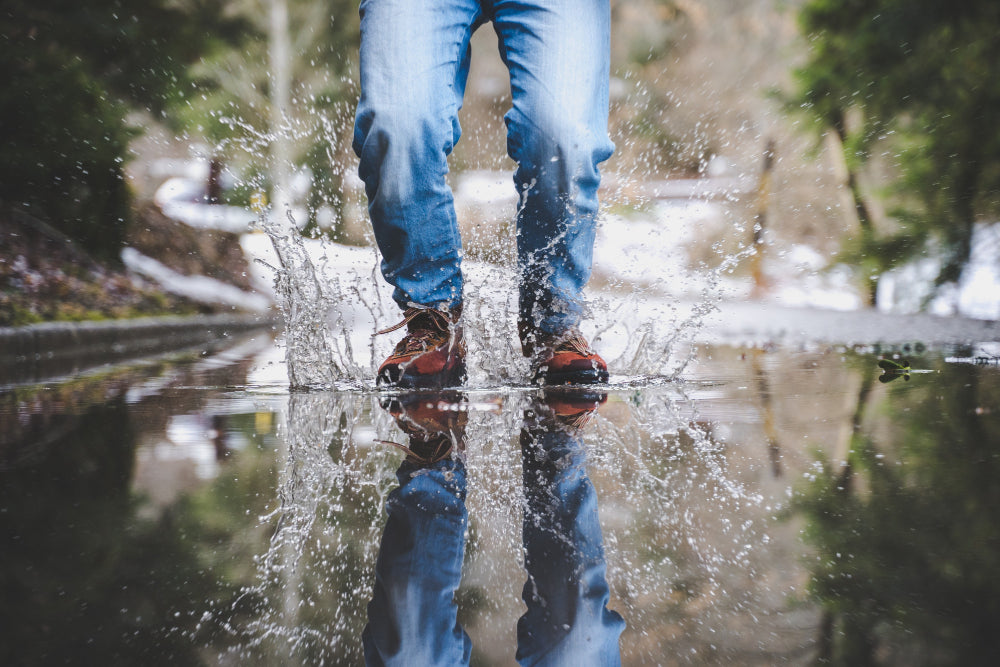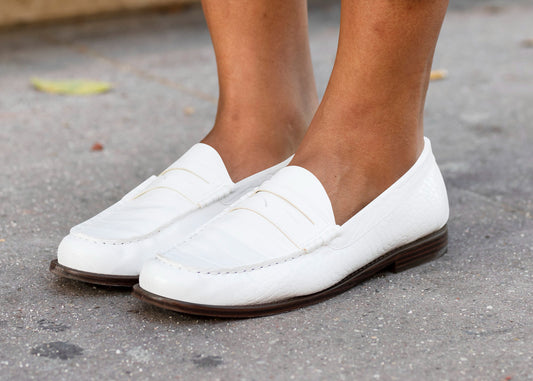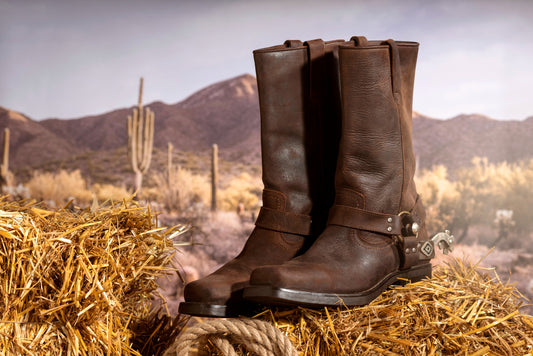How to Waterproof Shoes - 3 Ways to Waterproof Boots and Shoes

During the rainy days, there's nothing worse than soggy footwear. This is where waterproof boots come into play, serving as an ultimate solution to keep your shoes dry.
However, what if you could make your shoes, even your favorite leather ones, resist the wet weather too? By applying a waterproofing treatment, you can learn how to transform your regular shoes and boots into rain-resistant gear.
This will arm you with the knowledge and techniques to keep your shoes and boots dry even amid the wettest weather, keeping your feet comfortable and your walks enjoyable.
Benefits of Waterproofing Shoes

Before we go any further, let's dive into the key benefits of waterproofing your boots and shoes:
- Usability: With waterproof boots and shoes, you can wear the shoes you love, regardless of the weather. No need to switch to rainboots every time it drizzles.
- Protection: The waterproof seal provides a barrier against rain or snow, preventing your shoes from getting soggy and uncomfortable.
- Durability: Waterproofed shoes last longer. Exposure to water can cause materials, especially leather used in boots and shoes, to break down faster. Waterproofing protects against this.
- Comfort: A high level of water resistance allows for a dry and warm foot environment, improving overall comfort, especially in cold weather conditions.
- Savings: Instead of buying separate pairs of shoes for different weather conditions, you can save money by waterproofing your existing pairs.
- Versatility: Waterproofing treatments can be applied to various materials, including your favorite leather boots and leather shoes. This extends the usability of your footwear across different seasons and weather conditions.
- Health: Keeping feet dry helps prevent conditions like athlete's foot and other fungal infections that thrive in damp environments.
With all these benefits, waterproofing your shoes or boots becomes a necessary measure for anyone looking to extend the life of their footwear and make the most out of their investment.
3 Ways to Waterproof Shoes
Now, let us share with you three easy and effective ways to waterproof your shoes. You can choose the method that suits you best based on the materials of your footwear, personal preference, and level of water resistance needed.
- Spraying Waterproofing Solution
- Using Beeswax
- Applying Silicone Sealant
Spraying Waterproofing Solution
First on our list of waterproofing methods is the use of a waterproof spray. This option is particularly favored by many because of its simplicity and effectiveness. In fact, this waterproofing method is seen to be the best for many types of footwear.
It's as simple as spraying a water-repellent spray, such as Stone and Clark's stain and water repellent spray, evenly across the entire shoe.
Before starting, ensure you clean your shoes thoroughly. Any dirt or grime can prevent the spray from fully adhering to the surface of the shoe. Once the shoe is clean, hold your selected waterproof spray approximately 6-8 inches away from the shoe for optimal coverage. Spray the solution evenly, ensuring every part of the shoe, including the less visible areas, are thoroughly covered.
After you've sprayed the shoes, allow them to dry naturally. Depending on the product instructions, this could be a few hours or overnight. This drying process is what creates the waterproof seal. The best waterproof sprays can be purchased from most shoe stores or online, and they not only make your shoes waterproof but provide additional protection against stains.
Remember, the key to successful waterproofing is to use a clean, dry shoe, and to allow the product to fully dry after application. Feel free to experiment with different waterproofing products to find the perfect one for your shoes.
But for a good waterproof spray like Stone and Clark's will offer long-lasting protection and keep your shoes dry in any weather.
Using Beeswax
Another effective method to waterproof your shoes is using beeswax. This technique is especially beneficial for canvas shoes or fabric shoes, and can also be used to waterproof leather. Beeswax creates a durable and water-resistant layer that will keep your shoes dry in all types of weather.
Here are the steps on how to waterproof your shoes using beeswax:
- Clean the Shoes: Before starting the process, thoroughly clean your shoes to ensure there are no dirt or grime. You can use a damp cloth for this purpose.
- Apply the Beeswax: Rub the wax over the entire surface of each shoe. Make sure to cover all parts, including the stitching and seams, for a comprehensive waterproof layer.
- Melt the Wax: After applying the wax, use a heat source like a hair dryer to melt the wax into the fabric of the shoe. This will create a waterproof seal.
- Remove Excess Wax: Once the shoes have cooled down, wipe off any excess wax with a clean cloth.
- Dry the Shoes: After you've wiped off the excess wax, let the shoes dry naturally. Avoid placing them in direct sunlight as it can cause the wax to crack.
- Reapply the Waterproofing: Over time, the waterproof layer may wear off. Therefore, you may need to periodically reapply the beeswax to maintain the water-resistant properties.
By following these steps, your shoes will have an effective waterproof layer against water damage. Remember to always allow the shoes to dry fully before wearing them after the waterproofing process. Water will bead off the surface, keeping your feet dry and comfortable.
Applying Silicone Sealant
Lastly, one method that is especially effective for suede boots and suede shoes, or shoes made from nubuck, is the use of a silicone sealant or silicone spray.
Silicone-based sprays form a powerful water-resistant layer that protects your shoes temporarily from water and stains without altering their color or texture.
Here is how to treat your shoes with silicone spray:
- Start with Clean Shoes: Before applying the silicone spray, it's crucial that your suede shoes are clean and dry. Remove any dirt or grime using a soft brush or damp cloth and let the shoes air dry completely.
- Apply the Spray: Hold the can approximately 6-8 inches away from the shoe and spray over the entire surface. Be sure to cover less visible areas as well, for complete protection.
- Let the Shoes Air Dry: After spraying, let the shoes air dry naturally. Avoid placing them near a heat source as it may damage the material.
- Repeat the Process: Since silicone sprays offer temporary protection, you'll need to repeat the process regularly for continued water resistance.
By following this method, you can effectively extend the life of your suede shoes and keep them looking their best, regardless of the weather conditions.
How to Maintain the Waterproof Quality of your Shoes

Now, after you've waterproofed your shoes, it's essential to maintain their water-resistant properties.
Here are a few tips to help you keep your shoes in top condition:
- Store in a Dry, Well-Ventilated Area: After treating your shoes with any waterproofing method, it's important to store them in a dry, well-ventilated area. This helps in maintaining the effectiveness of the waterproofing treatment, whether you've used a waterproofing spray, beeswax, or silicone sealant.
- Break in the Shoes: After applying a layer of wax or other waterproofing treatment, allow the boots to dry thoroughly before using them. Wear them around your house to break in the shoes. This will help the waterproofing solution to better adhere to the shoe material and ensure long-lasting protection.
- Reapplication of Waterproofing Solution: Over time and use, the waterproofing layer can wear off. Regularly check the condition of your shoes and reapply the waterproofing solution when necessary. When using wax, pay close attention to areas like the seams and stitching, where water can easily seep in.
- Consider the Material of Your Shoes: Not all waterproofing solutions are suitable for all types of shoe materials. For instance, silicone sealant is preferred for suede or nubuck shoes, while beeswax is ideal for canvas shoes and leather boots. Always consider the material of your shoes before deciding on the best waterproofing method to use on your shoes.
- Care for Your Rain Boots: Rain boots are inherently waterproof. However, to extend their lifespan, it's advisable to clean them after use and allow them to dry naturally in a well-ventilated area before storing.
Closing Thoughts
There's no better way to waterproof your shoes than using these simple and effective methods. Whether you prefer a waterproof spray, beeswax, or silicone sealant, these techniques will provide long-lasting protection for your shoes against water damage.
Remember to follow the steps carefully and maintain the waterproof quality of your shoes for comfortable and dry feet in any weather condition. Don't let rain or snow ruin your favorite pair of shoes – waterproof them today!
So, go ahead and grab your favorite waterproofing solution and protect your shoes for years to come.





